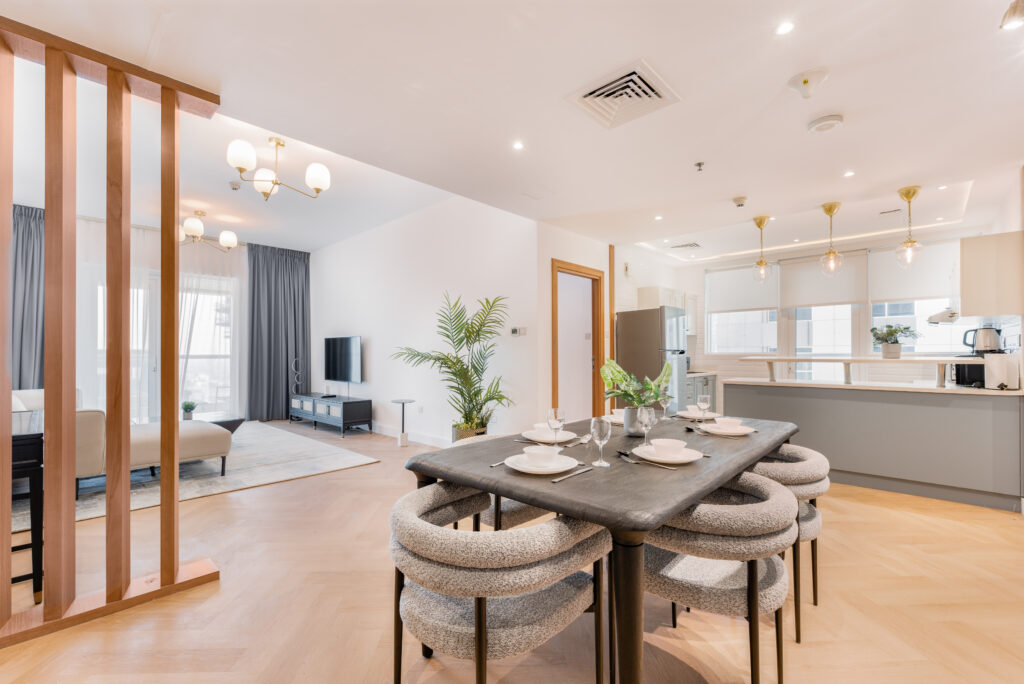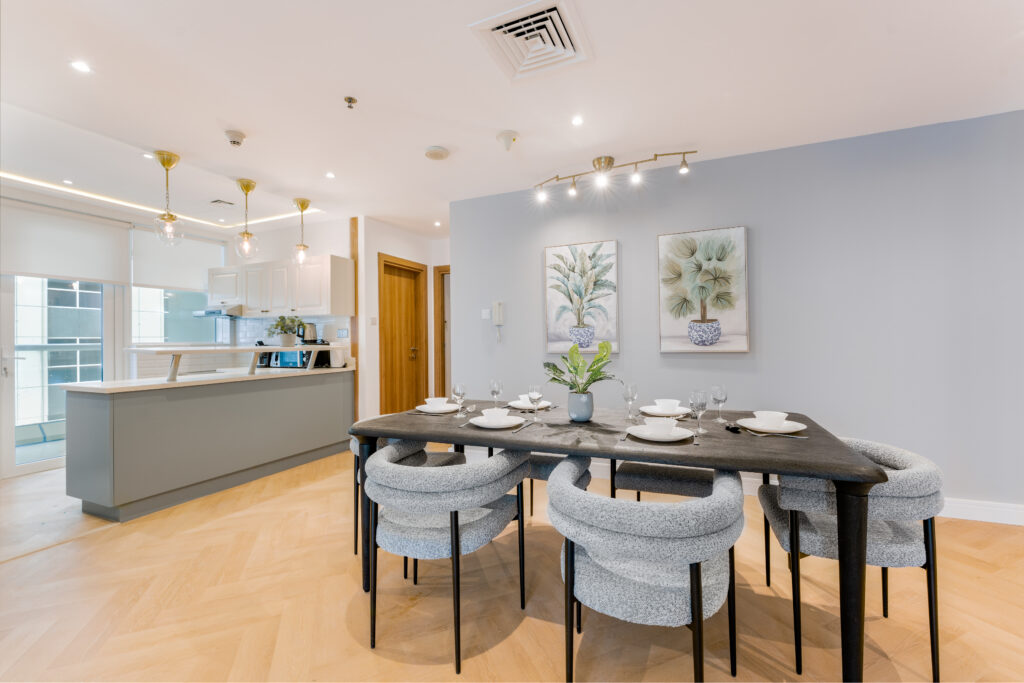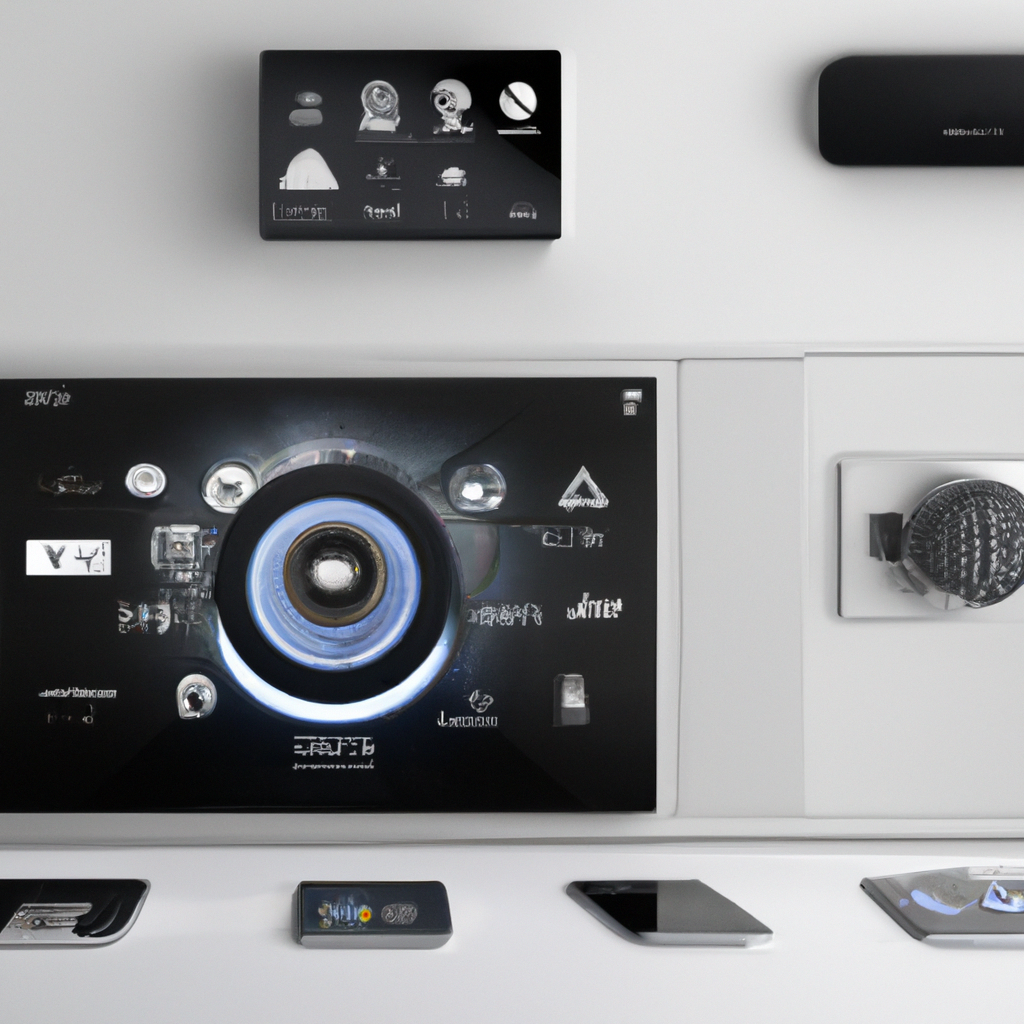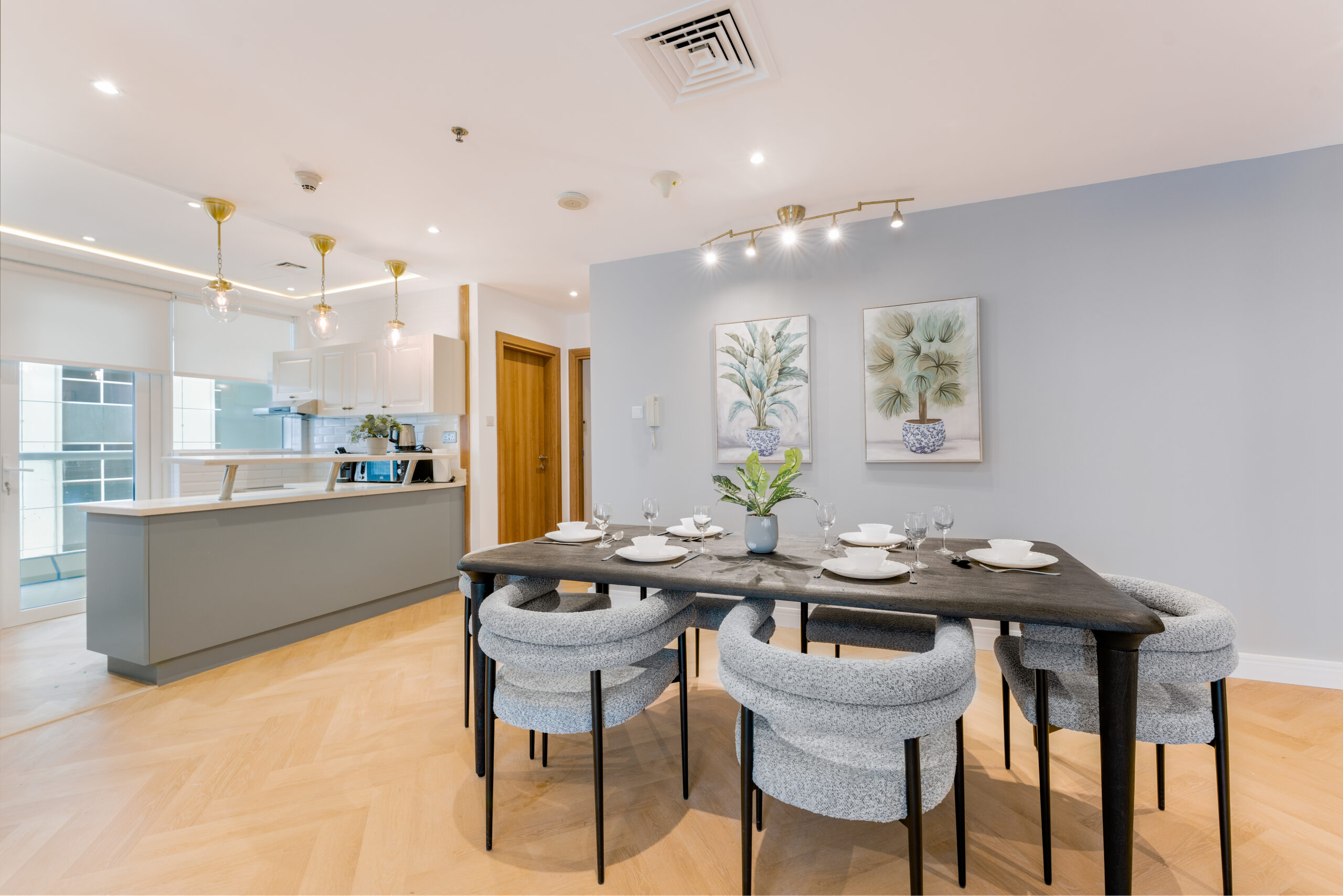If you’ve ever wondered how to bring the convenience of smart home automation into your existing home security system, look no further. With the advancements in technology, integrating these two systems has become easier than ever. Gone are the days of separate controls and disparate devices. Now, you can seamlessly connect your smart home automation features, such as lighting, thermostats, and door locks, with your home security system to create a truly integrated and secure living environment. Discover the possibilities and benefits of this integration, and take your home security to the next level.

Benefits of Integrating Smart Home Automation with Home Security
Smart home automation offers a myriad of benefits when integrated with your existing home security system. By combining the power of automation and security, you can enhance the safety of your home, enjoy increased convenience, save money, and have remote access and monitoring capabilities.
Understanding Smart Home Automation
What is Smart Home Automation?
Smart home automation refers to the utilization of technology to control various aspects of your home, such as lighting, heating, ventilation, air conditioning (HVAC), appliances, and security systems. Through the use of sensors, switches, and remote control devices, smart home automation allows for the seamless management of your home’s functions.
Components of a Smart Home Automation System
A smart home automation system consists of several key components, including:
- Central Control Hub: This serves as the brain of the system, connecting and controlling all the devices and sensors.
- Smart Devices: These include smart lights, thermostats, locks, cameras, and sensors that can be operated and monitored remotely.
- Network: A reliable and secure network is essential for the proper functioning of smart home automation.
- Mobile App: An intuitive mobile app allows you to control and monitor your smart home automation system from anywhere.
Existing Home Security Systems
Types of Existing Home Security Systems
There are various types of existing home security systems available, including:
- Alarm Systems: These systems feature door and window sensors, motion detectors, and an alarm that sounds when an unauthorized entry is detected.
- Video Surveillance: Video surveillance systems utilize cameras to monitor and record activities around your property.
- Access Control Systems: Access control systems manage entry to your home through methods such as keypads, key cards, or biometric identification.
- Security Monitoring: These systems employ professional monitoring services to ensure the continuous safety of your home.
Compatibility of Existing Systems with Smart Home Automation
Before integrating smart home automation with an existing security system, it is important to assess compatibility. Many smart home automation systems can be seamlessly integrated with existing security systems. This compatibility allows you to enhance your home security without having to replace your entire system.
Advantages of Integrating Smart Home Automation with Existing Security Systems
Enhanced Security Features
Integrating smart home automation with your existing security system provides enhanced security features. You can combine the capabilities of your security system with automated actions, such as receiving instant alerts on your mobile device when a sensor is triggered, or automatically locking doors and turning on lights when you arm your security system. These integrated features give you greater control and awareness of your home’s security.
Convenience and Ease of Use
By integrating smart home automation with your existing security system, you can enjoy convenience and ease of use. Instead of managing multiple systems separately, you can control and monitor everything through a single mobile app. This integration simplifies the management of your security system and makes it more user-friendly, allowing you to easily arm or disarm your security system, control lights and appliances, and monitor cameras from anywhere.
Cost Savings
Integrating smart home automation with your existing security system can lead to cost savings. By automating certain functions, such as adjusting the temperature or turning off lights when you’re not at home, you can save energy and reduce utility bills. Additionally, some insurance companies offer discounts for homes with integrated security systems, which can help offset the cost of the automation equipment.
Remote Access and Monitoring
One of the key benefits of integrating smart home automation with your existing security system is the ability to have remote access and monitoring capabilities. Whether you’re at work or on vacation, you can check the status of your security system, view live camera feeds, and receive alerts on your mobile device. This remote access provides peace of mind and allows you to respond quickly to any security events, even when you’re away from home.

Choosing the Right Smart Home Automation System for Integration
Research and Comparison
When choosing a smart home automation system for integration with your existing security system, it’s important to conduct thorough research and comparison. Look for systems that offer the features you need, have positive reviews, and are compatible with your existing security system. Consider factors such as ease of use, reliability, and customer support when making your decision.
Assessing Compatibility with Existing Security System
Before making a purchase, assess the compatibility of the smart home automation system with your existing security system. Check if the automation system can communicate with your security system’s sensors, cameras, and control panel. Compatibility is crucial to ensure a smooth integration process and optimal functionality.
Functionality and Customization Options
Consider the functionality and customization options offered by the smart home automation system. Look for features such as geofencing, which can automatically adjust security settings based on your location, customizable alerts, scene creation, and voice control compatibility. Choose a system that aligns with your preferences and provides the flexibility to customize automation routines to suit your needs.
Installation and Setup Process
Assessing Existing Wiring and Infrastructure
Before installing a smart home automation system, assess your existing wiring and infrastructure. Determine if any modifications or additional wiring is required to seamlessly integrate the automation system with your existing security system. If necessary, consult a professional to ensure proper installation and ensure all devices are connected correctly.
Required Equipment and Tools
Gather all the required equipment and tools for the installation process. This may include the central control hub, smart devices such as cameras and sensors, a secure and reliable network, and any additional wiring or hardware needed for integration. Following the manufacturer’s instructions and using appropriate tools, set up each component carefully to avoid any issues in the future.
Configuring and Connecting the Smart Home Automation System
Once the physical installation is complete, configure and connect the smart home automation system. This typically involves connecting the devices to the central control hub, configuring the network settings, and pairing the mobile app with the system. Follow the manufacturer’s instructions, and if necessary, seek assistance or refer to online resources for troubleshooting.

Integration Methods
Wireless Integration
Wireless integration is a popular method for integrating smart home automation with your existing security system. This method utilizes wireless communication protocols, such as Wi-Fi or Z-Wave, to connect the automation system with your security devices. Wireless integration offers flexibility, as it eliminates the need for extensive wiring modifications and allows for easy scalability.
Wired Integration
Wired integration involves connecting the smart home automation system to your existing security system using physical wiring connections. This method may require more extensive installation work, as it involves running wires between the devices and control panels. Wired integration often offers greater reliability and stability compared to wireless, as it eliminates potential wireless interference issues.
Hybrid Integration
Hybrid integration combines the benefits of both wireless and wired integration methods. In a hybrid setup, you can utilize wireless connectivity for certain devices, such as cameras and sensors, while connecting critical components, such as the control panel, through wired connections. This allows for more flexibility in device placement while ensuring a reliable connection for essential functions.
Configuring Home Security with Smart Home Automation
Setting Up Security Cameras and Sensors
After the integration, configure and set up the security cameras and sensors. Ensure that the cameras cover critical areas of your property and that the sensors are strategically placed to detect any unauthorized entry. Connect the cameras and sensors to the smart home automation system and adjust their settings to align with your security preferences.
Establishing Security Zones and Modes
Establish security zones and modes within your smart home automation system to customize your security settings. Through the mobile app, you can create different security profiles for different scenarios, such as “Home,” “Away,” or “Vacation.” Define the actions you want the system to take in each mode, such as turning on specific lights, locking doors, or activating alarms.
Integrating Alarm Systems
Integrate your existing alarm systems with the smart home automation system to enhance the security of your home. This integration allows you to monitor and control the alarm through the mobile app, receive alerts when the alarm is triggered, and automate actions like contacting emergency services or activating additional security measures.

Smart Home Automation Apps and Platforms
Popular Smart Home Automation Apps
There are various popular smart home automation apps available that offer intuitive interfaces and comprehensive functionalities. Some well-known apps include:
- Apple HomeKit: Designed for Apple users, HomeKit offers seamless integration with compatible devices and provides a user-friendly interface.
- Google Home: Google Home allows for voice-controlled automation and provides integration with a wide range of smart devices.
- Amazon Alexa: Alexa acts as a virtual assistant and offers easy control of smart devices and automation routines through voice commands.
- Samsung SmartThings: SmartThings is compatible with a wide range of smart devices and offers advanced customization options for automation routines.
Exploring Integration Platforms
In addition to apps, there are integration platforms available that bring together multiple smart home devices and systems under a single interface. Some popular integration platforms include:
- Hubitat Elevation: Hubitat provides a local control platform that allows for the integration of various devices and systems, including security, lighting, and climate control.
- Home Assistant: Home Assistant is an open-source platform that supports integration with hundreds of devices and systems, offering extensive customization possibilities.
- Control4: Control4 is a professionally installed automation platform that offers seamless integration with security, audio/video, lighting, and more.
Troubleshooting and Maintenance
Identifying and Resolving Integration Issues
In the event of integration issues, it is important to identify and resolve them promptly. Check for any compatibility issues, update firmware or software as necessary, and ensure all devices are connected to the same network. Review manufacturer documentation, seek assistance from customer support, or consult online forums to troubleshoot specific integration issues.
Regular Maintenance and Updates
Regular maintenance and updates are crucial for the optimal performance of your integrated smart home automation and security system. Schedule regular checks on your devices, sensors, and cameras to ensure they are functioning correctly. Keep firmware and software up to date to benefit from added features, bug fixes, and improved security. Regular maintenance and updates help ensure the longevity and reliability of your integrated system.
In conclusion, integrating smart home automation with your existing home security system offers numerous benefits. It enhances security features, provides convenience and ease of use, offers cost savings, and enables remote access and monitoring. By choosing the right automation system, following the proper installation and setup process, and configuring security settings appropriately, you can enjoy the full potential of a smart and secure home. Regular troubleshooting, maintenance, and updates ensure the continued functionality and reliability of your integrated system. So, why not take the leap and unlock the potential of a seamlessly integrated smart home automation and security system?











